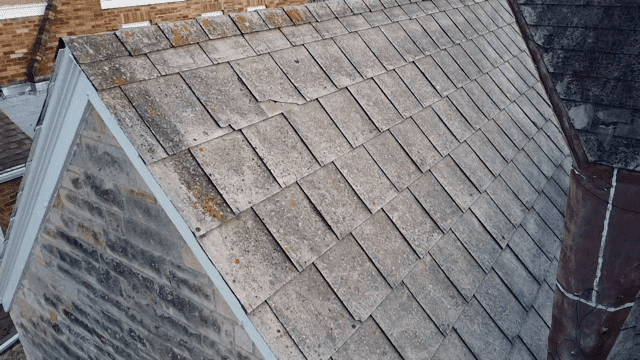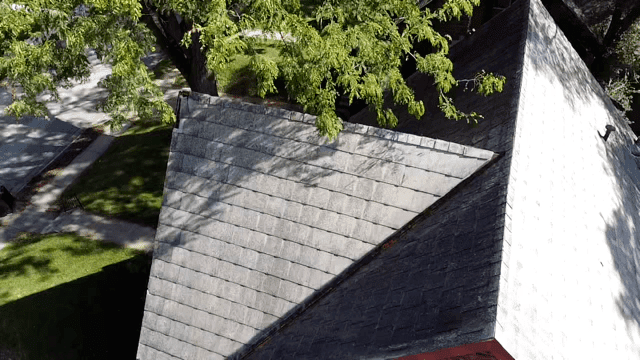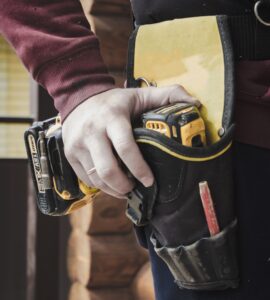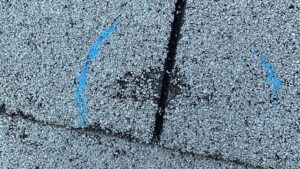When was the last time you had to replace a roof on an older home? There’s a good chance that the shingles, sealant, gutters, or grouting contain asbestos.
From the 1920s through the late 1980s, asbestos cement shingles were quite popular. Many of these roofs are still in service after a lifespan of 30 to 50 years.
Asbestos removal should be left to the professionals. When it comes to doing your own asbestos roof maintenance, it’s important to follow safety guidelines.

Public Safety
Asbestos fibers may provide a health hazard to anyone who come into contact with them. Always give your neighbors advance notice and restrict access to the area in which you are working.
Do’s:
· Inform your neighbors about the work you’re about to do and when
· Prevent access to the surrounding work area
Site Preparation
Put up physical barriers to protect your home and landscaping, and gather all the items you’ll need in one area.
Do’s:
· Keep all doors and windows shut
· Cover up any air vents
· Turn off the home’s air conditioning
· Place a tarp or plastic sheeting around the area
· Get asbestos waste removal bags on hand, along with duct tape
· Remove any lawn equipment, toys, or other objects in the vicinity
· Buy separate cleaning tools like mops and rags
· Get all your equipment outside and in one place, to avoid the need to go back inside or walk around too much
Personal Protection
Asbestos personal protective equipment is required. It’s not enough to wear layers or to wear throwaway work clothing.
Don’t take any chances since asbestos fibers can pass through other materials.
Do’s:
· Wear disposable asbestos clothing that has a hood and protects your shoes
· Wear an asbestos respirator that has an airtight fit (that means shaving any facial hair)
· Before removing asbestos work clothes, keep the respirator on and mist the clothing with water
· Place used clothing in an asbestos waste bag and seal it
· Always take a shower after removing asbestos gear
Don’ts:
· Never shake dust or dirt off clothing
· Don’t keep or reuse any of the disposable protection garments
Handling Asbestos
When working with asbestos, it is common practice to damp down all of the components. But you can’t do it on a roof, period.
To begin with, asbestos shingles are notoriously slick. Inexperienced homeowners should avoid working on slick or wet surfaces. As a result, it’s important to keep dust and breakage to a minimum. Wet the materials down once they’ve been laid out on the ground.
Do’s:
· Asphalt shingles are often brittle, so work slowly to avoid breaking them
· Carefully lower shingles to the ground
Don’ts
· never drop or break asbestos-containing materials
· don’t slide shingles across each other
· sand, scrape, or brush shingles
· don’t drill holes into asphalt shingles
Waste Disposal
Asbestos roofing materials, unlike asphalt shingles, cannot be thrown in the trash. The shingles and any roofing materials, as well as any other materials, must be deposited in appropriate asbestos disposal bags.
Everything must be double-bagged and then duct taped shut. Carry out this procedure even if you believe the material is not tainted.
Do’s:
· Get asbestos disposal bags
· Wet down all asbestos-containing materials and dispose of them in asbestos disposal bags
· Clean the area by wet mopping it with water that has a few drops of environmentally safe liquid mixed in or hire an asbestos cleaning crew
· Have an asbestos waste removal service take the trash away or bring it to an asbestos-accepting landfill
· Toss anything used to clean the area, like cloths, mops, and contaminated buckets
Don’ts:
· Don’t take asbestos material to the regular dump
· Never place asbestos material in a domestic trash can
· Never sweep, dust, or vacuum up debris
Tools and Equipment
Precautions must be taken when working with asbestos cement shingles. Drilling or using other power equipment is not permitted, as this will cause the fibers to fly out.
These shingles are brittle and will eventually break, but work slowly and carefully to avoid this.
Do’s:
· Only use hand-operated equipment or very carefully use low-speed tools
Don’ts:
· Don’t use power washers or any high-pressure water jets
· Don’t use power tools like grinders or saws
· Don’t use compressed air tools
· Don’t use abrasive cutting or sanding discs
· Don’t use electric sanders or grinders
· Don’t use household vacuum cleaners
Safety To-Do List
Here’s a safety recap in a convenient to-do list.
1. Tell your neighbors that you’ll be working with asbestos and ask them to keep their windows shut, doors closed, and HVAC off during that time.
2. Close your windows, shut the doors, turn off the HVAC, and block off any vents.
3. Remove any objects in the area.
4. Place a tarp down around the area.
5. Place plastic sheeting or drop cloths around the area.
6. Cordon off the area with rope or barrier tape.
7. Gear up in asbestos-rated personal protection equipment – disposable clothing, boots, and a respirator.
8. Work carefully when cleaning, removing, or repairing shingles.
9. Lower any pieces down carefully.
10. Wet any roofing material once it’s on the ground, using water with a few drops of liquid soap.
11. Wet the surrounding areas.
12. Double bag waste in asbestos disposal bags, then seal it tight with duct tape.
13. To remove clothing, mist yourself down with water, wipe off the boots, then carefully remove the coveralls and respirator.
14. Place the clothing in waste removal bags, then double bag it and seal.
15. Shower off.
16. Have an asbestos waste removal take the trash away or bring it to an asbestos-accepting landfill.

Get Qualified Asbestos Roofers
Asbestos is a hazardous material to work with. Simply inhaling it can result in irreparable scarring of the tissue, cancer, and other pleural disorders.
Why take a chance? There is no reason to jeopardize your health or safety when our professional roofers are just a phone call or short message away.
We’ve been working on roofs for over two decades at Midwest Roof and Solar. We understand how to operate with asbestos safely and without endangering homeowners and their families.
Contact us if you’re interested in maintaining, repairing, or replacing an asbestos roof. We’ll send a skilled, asbestos-trained roofer out to complete the job safely.





